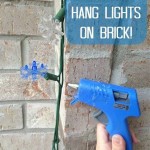Mastering Low Voltage Outdoor Lighting: Essential Design Tips
Transforming your outdoor space into a captivating evening oasis requires a well-thought-out lighting plan. By harnessing the versatility of low voltage lighting, you can illuminate paths, accentuate architectural features, and create an ambiance that seamlessly blends with the natural surroundings. Here are some essential tips to guide your low voltage outdoor lighting design:
1. Plan the Purpose and Function: Before installing any lights, determine the intended purpose of each area you wish to illuminate. Consider whether you need path lighting for safety, accent lighting to highlight architectural elements, or ambient lighting to create a cozy atmosphere. Defining the function will help you select the appropriate fixtures and placement.
2. Consider the Landscape: Use existing landscaping to your advantage. Trees, shrubs, and other natural features can act as natural screens or focal points. Position lights to cast shadows or highlight the texture of plants, creating a more dynamic and visually appealing effect.
3. Choose the Right Fixtures: Low voltage fixtures come in a wide range of styles and finishes. Select fixtures that complement the architectural style of your home and the overall aesthetic of your outdoor space. Consider the material, shape, and size to ensure a cohesive design.
4. Utilize Layers: Create depth and interest by using different layers of lighting. Install path lights for safety, accent lights to highlight architectural features, and ambient lights to provide a soft glow. By combining these layers, you can create a multi-dimensional lighting scheme that enhances the overall ambiance.
5. Observe Shadows: Shadows can add drama and intrigue to your outdoor space. Experiment with different fixture placements to create interesting shadow patterns. Use spotlights to cast sharp shadows on walls or highlight specific objects, or use diffuse lighting to create softer, more ethereal effects.
6. Pay Attention to Safety: While low voltage lighting is generally considered safe, it's crucial to follow proper installation guidelines. Hire a qualified electrician to ensure your system is installed and wired correctly. Use fixtures rated for outdoor use and shielded to prevent glare.
7. Consider Energy Efficiency: Look for low voltage fixtures that utilize LED technology. LED bulbs are energy-efficient, long-lasting, and produce a crisp, bright light. By incorporating energy-efficient lighting, you can reduce your energy consumption and save money in the long run.
8. Design for Controllability: Incorporate switches or dimmers to control the intensity and ambiance of your outdoor lighting. This allows you to adjust the lighting levels to create different moods and cater to specific events or activities.
9. Maintain Regularly: To ensure optimal performance and longevity, regularly clean your light fixtures and replace bulbs as needed. Check for any loose connections or damaged wires and address them promptly to maintain the safety and aesthetics of your outdoor lighting system.
By following these design tips, you can create a stunning and functional low voltage outdoor lighting scheme that will transform your outdoor space into a safe, inviting, and visually captivating haven.

10 Best Outdoor Lighting Ideas Landscape Design Secrets A Piece Of Rainbow

The Easiest Way To Install Low Voltage Landscape Lighting Abby Organizes

10 Best Outdoor Lighting Ideas Landscape Design Secrets A Piece Of Rainbow

10 Best Outdoor Lighting Ideas Landscape Design Secrets A Piece Of Rainbow

Outdoor Lighting Ideas To Make Your Yard Look Like A Luxury Resort Above All Masonry

The 3 Best Smart Outdoor Lights For Backyards Of 2024 Reviews By Wirecutter

10 Best Outdoor Lighting Ideas Landscape Design Secrets A Piece Of Rainbow

Outdoor Lighting Design Installation J Landscape

How To Use Landscape Lighting Techniques

The Art And Magic Of Professional Waterfall Water Feature Lighting
Related Posts








